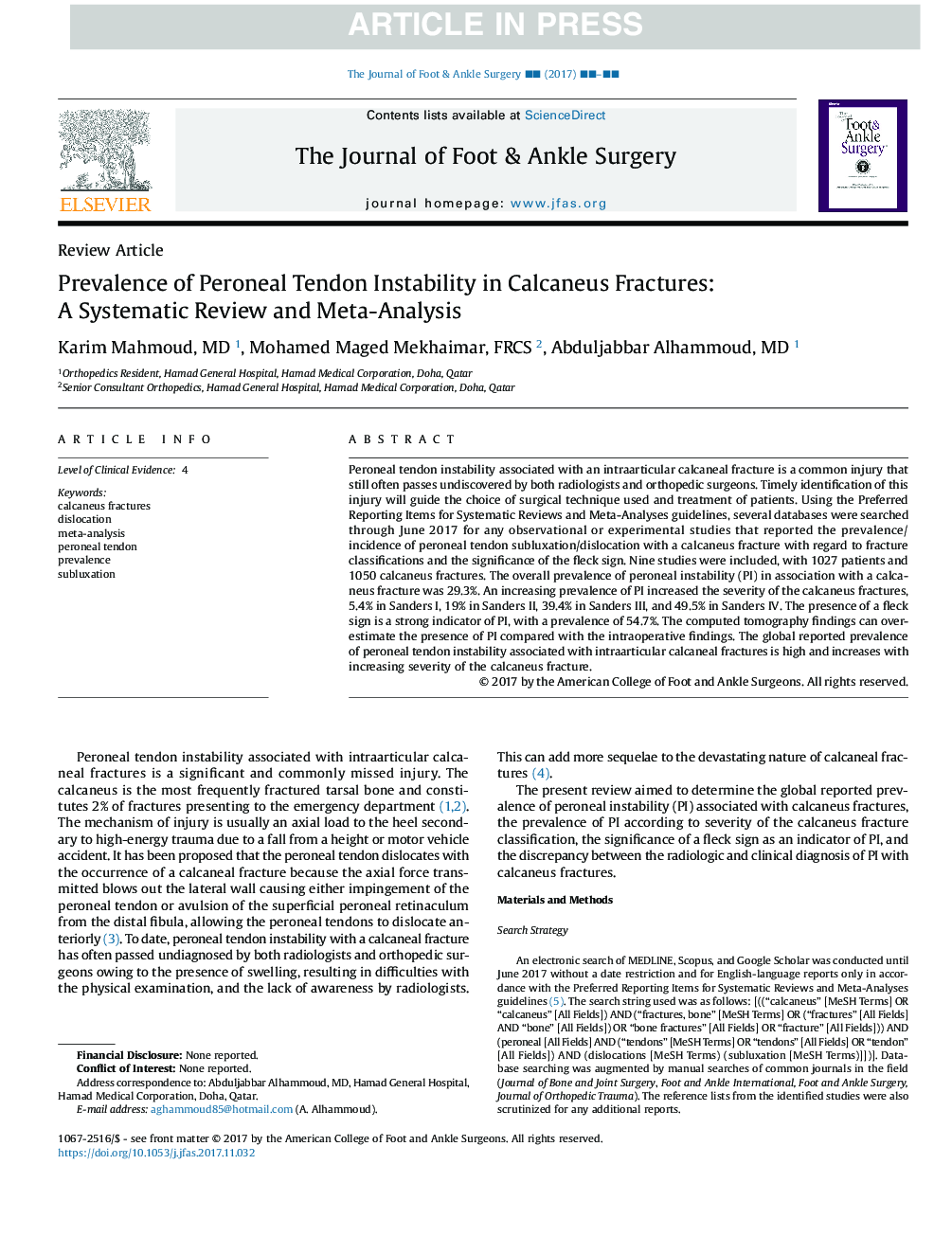| Article ID | Journal | Published Year | Pages | File Type |
|---|---|---|---|---|
| 8603054 | The Journal of Foot and Ankle Surgery | 2018 | 7 Pages |
Abstract
Peroneal tendon instability associated with an intraarticular calcaneal fracture is a common injury that still often passes undiscovered by both radiologists and orthopedic surgeons. Timely identification of this injury will guide the choice of surgical technique used and treatment of patients. Using the Preferred Reporting Items for Systematic Reviews and Meta-Analyses guidelines, several databases were searched through June 2017 for any observational or experimental studies that reported the prevalence/incidence of peroneal tendon subluxation/dislocation with a calcaneus fracture with regard to fracture classifications and the significance of the fleck sign. Nine studies were included, with 1027 patients and 1050 calcaneus fractures. The overall prevalence of peroneal instability (PI) in association with a calcaneus fracture was 29.3%. An increasing prevalence of PI increased the severity of the calcaneus fractures, 5.4% in Sanders I, 19% in Sanders II, 39.4% in Sanders III, and 49.5% in Sanders IV. The presence of a fleck sign is a strong indicator of PI, with a prevalence of 54.7%. The computed tomography findings can overestimate the presence of PI compared with the intraoperative findings. The global reported prevalence of peroneal tendon instability associated with intraarticular calcaneal fractures is high and increases with increasing severity of the calcaneus fracture.
Related Topics
Health Sciences
Medicine and Dentistry
Orthopedics, Sports Medicine and Rehabilitation
Authors
Karim MD, Mohamed Maged FRCS, Abduljabbar MD,
